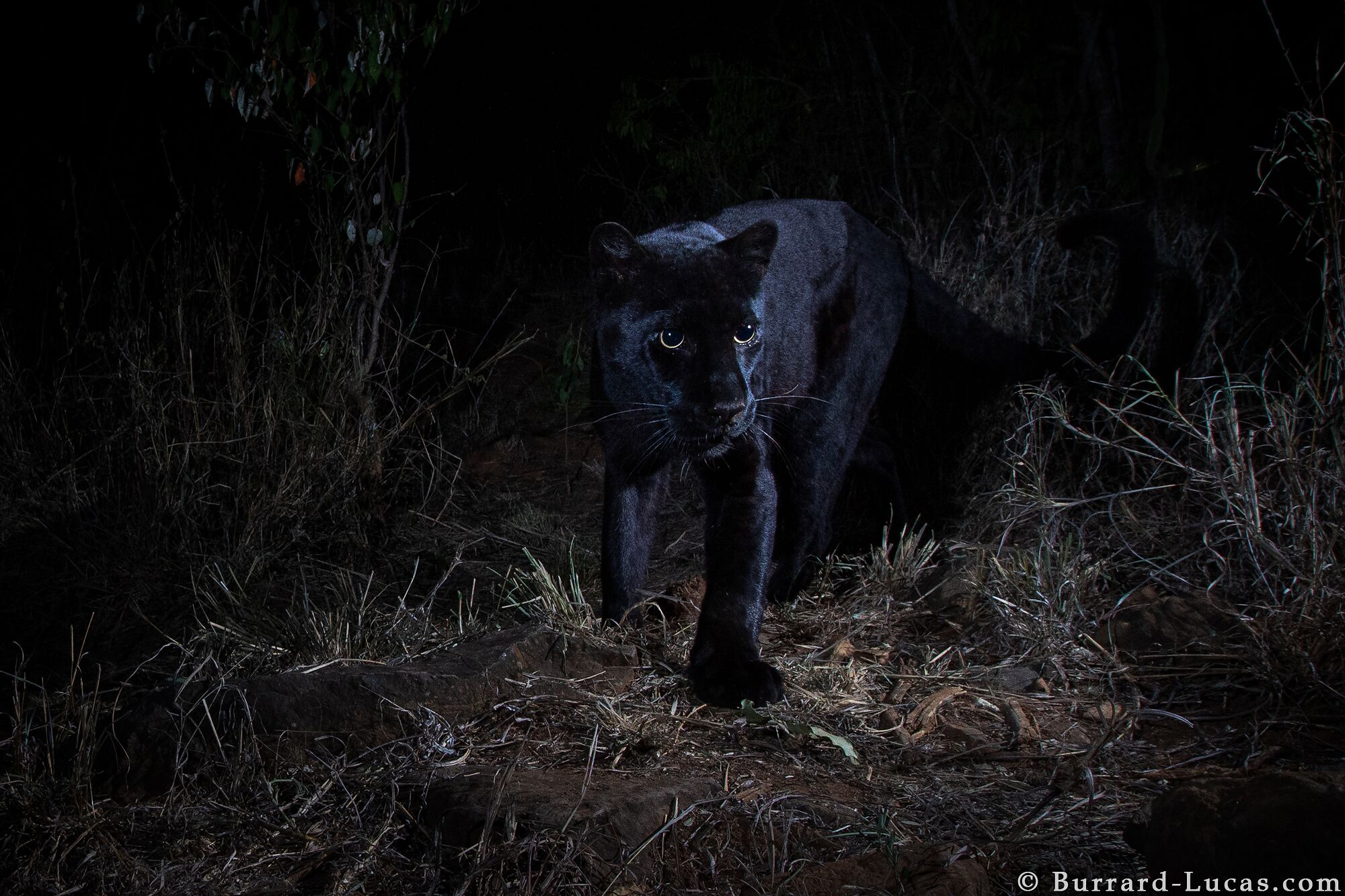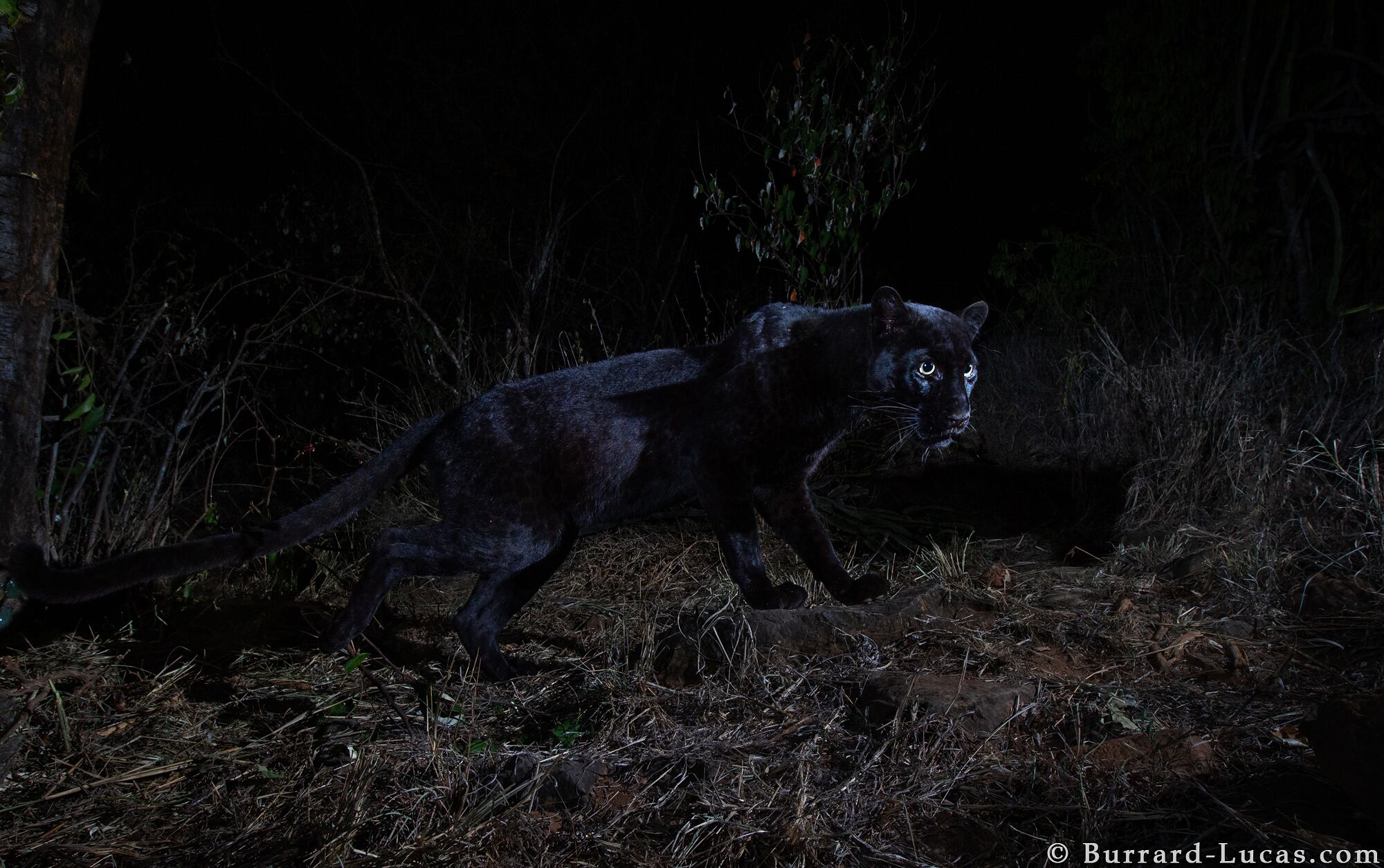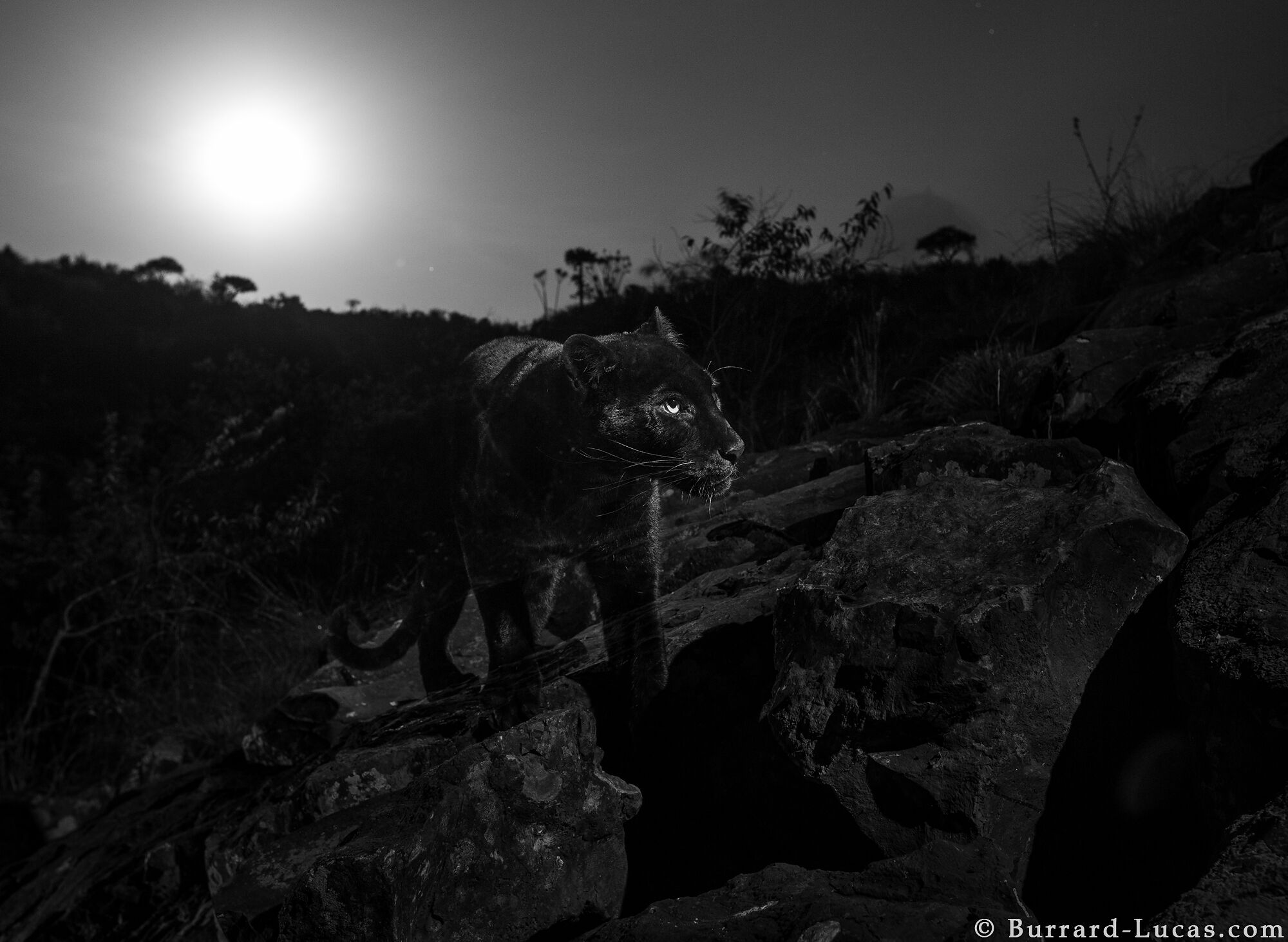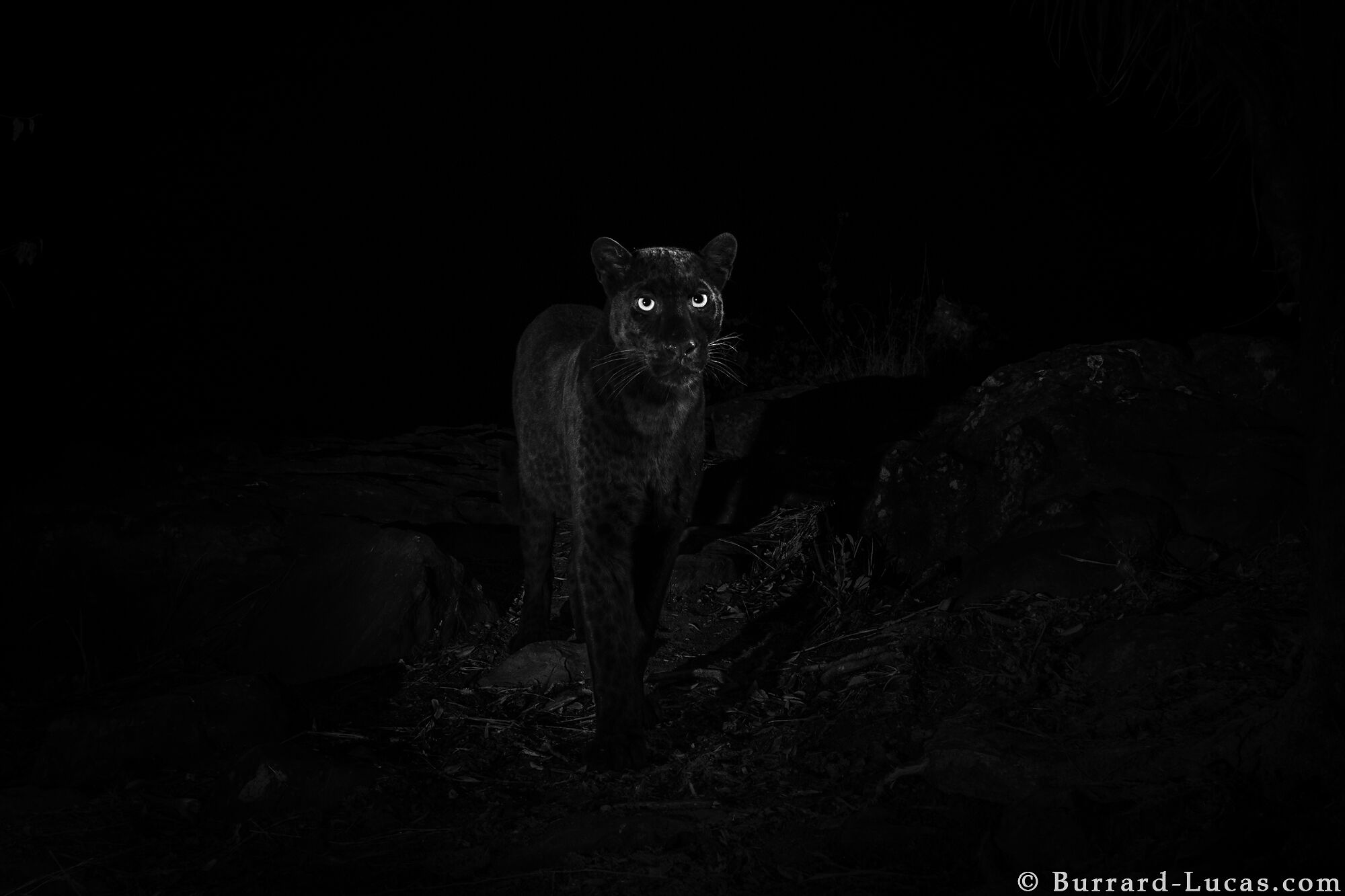
While any sighting of the critically-endangered leopard deserves mention, that of a black leopard is particularly newsworthy. What makes the specimen, recently captured on camera in Central Kenya by San Diego Zoo researchers and British wildlife photographer Will Burrard-Lucas, unique is that it is the first scientific documentation of such a creature in Africa in nearly a century. Prior to this, the only confirmed sighting was a 1909 photograph taken in Addis Ababa, Ethiopia.
The leopard's dark skin is the result of a genetic mutation known as melanism. The condition is similar to albinism, except it leads to an excess in pigmentation, which causes the fur, or skin, of an animal to turn black. The 11 percent of leopards across the nine subspecies that are melanistic are primarily found in the forests of Southeast Asia. "It's thought that melanism provides additional camouflage in those habitats, giving the predators an advantage when it comes to hunting," says Vincent Naude, leopard genetic forensics project coordinator for the nonprofit Panthera. However, "Our [Kenyan] leopards live in savannah-type environments, so having that extra melanism doesn't give them an adaptive advantage."

The Kenyan black leopard's existence first came to light in late 2017, when Ambrose Letolulai, a local leopard conservationist, was trying to understand the residents' daily conflict with the surrounding wild animals. During one conversation in September, an elder mentioned spotting a black leopard near a conservancy area in central Kenya's Laikipia County.
When Letolulai told San Diego Zoo scientist Nicholas Pilfold about the discussion, the researcher knew they might be on to something special. In early 2018, Pilfold's team descended upon the region and set up eight motion-detecting trail cameras where the black leopard sightings had been reported. Though it took a few months, the team captured several observations of the magnificent animal, who was often in the company of a larger, normal-colored, leopard, presumed to be her mother. The researcher, who published his findings along with some stunning footage of the animal in the African Journal of Ecology in January 2019, was thrilled to see the black leopard alive and well in Kenya. He told NPR, "They're a very elusive cat. And then to get black leopards, wow, the first time I got that I was very, very happy, very surprised."

Meanwhile, Burrard-Lucas, who heard about the rare animal in September 2018, also decided to see it for himself and made his way to the Laikipia Wilderness Camp in early February 2019. After consulting with Luisa Ancilotto, a local who had encountered the animal on numerous occasions, the photographer set up a series of camera traps. Each comprised his self-designed Camtraptions wireless motion sensor, a high-quality DSLR camera, and two or three flashes. Sure enough, a few days later, the black leopard made its appearance.
Burrard-Lucas writes in his blog, "As I scrolled through the images on the back of the camera, I paused and peered at the photograph below in incomprehension… a pair of eyes surrounded by inky darkness… a black leopard! I couldn’t believe it, and it took a few days before it sank in that I had achieved my dream."
The wild cat made several more visits to the area over the next few days, allowing the photographer to capture some amazing photographs, including one with a setting full moon in the background. Though it cannot be confirmed for sure, Burrard-Lucas and Pilfold's team are believed to have captured images of the same leopard.

If the magnificent animal reminds you of the superhero from Marvel's 2018 blockbuster 'Black Panther,' you are not wrong. "Black Panther is a general term that covers any big black cat," Pilfold says. "So black jaguars in South America, for example, are a type of black panther. And any black leopard in Africa and Asia is a type of black panther." Coincidentally, the juvenile wild cat resides close to the location of the movie's fictional Kingdom of Wakanda!
Resources: NatGeo.com, CNN.com, camtraptions.com/black-leopard
